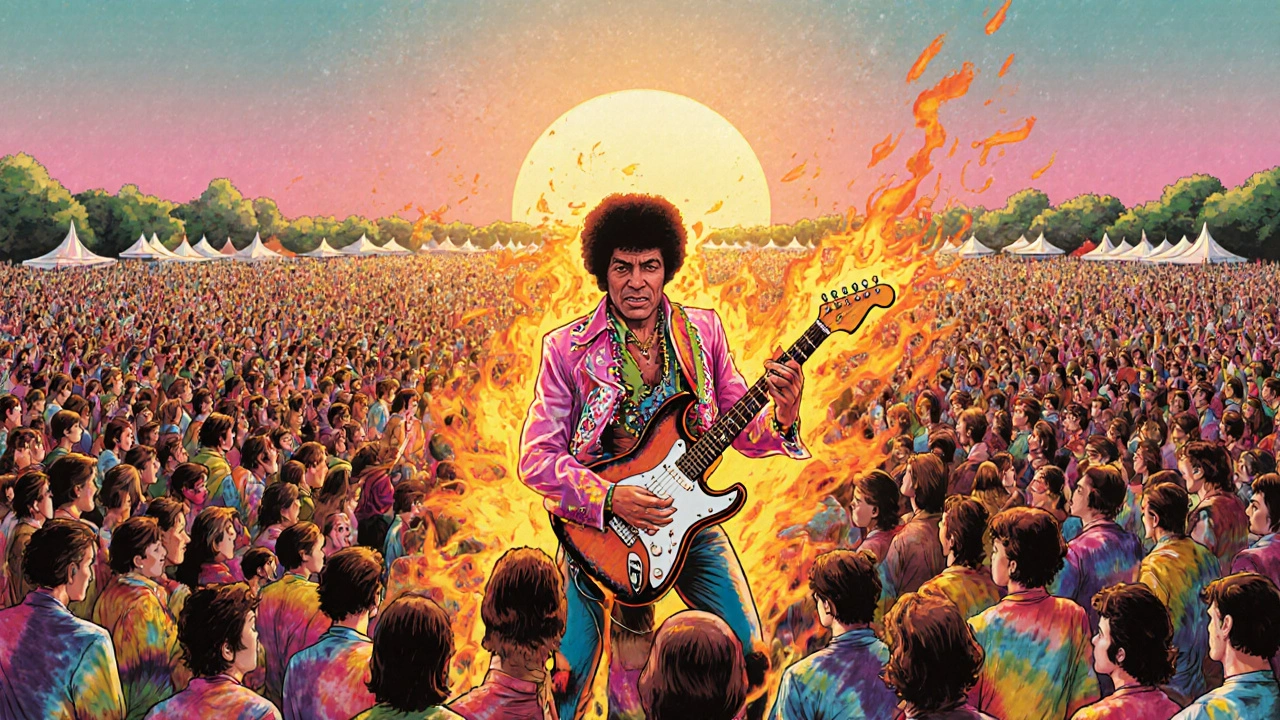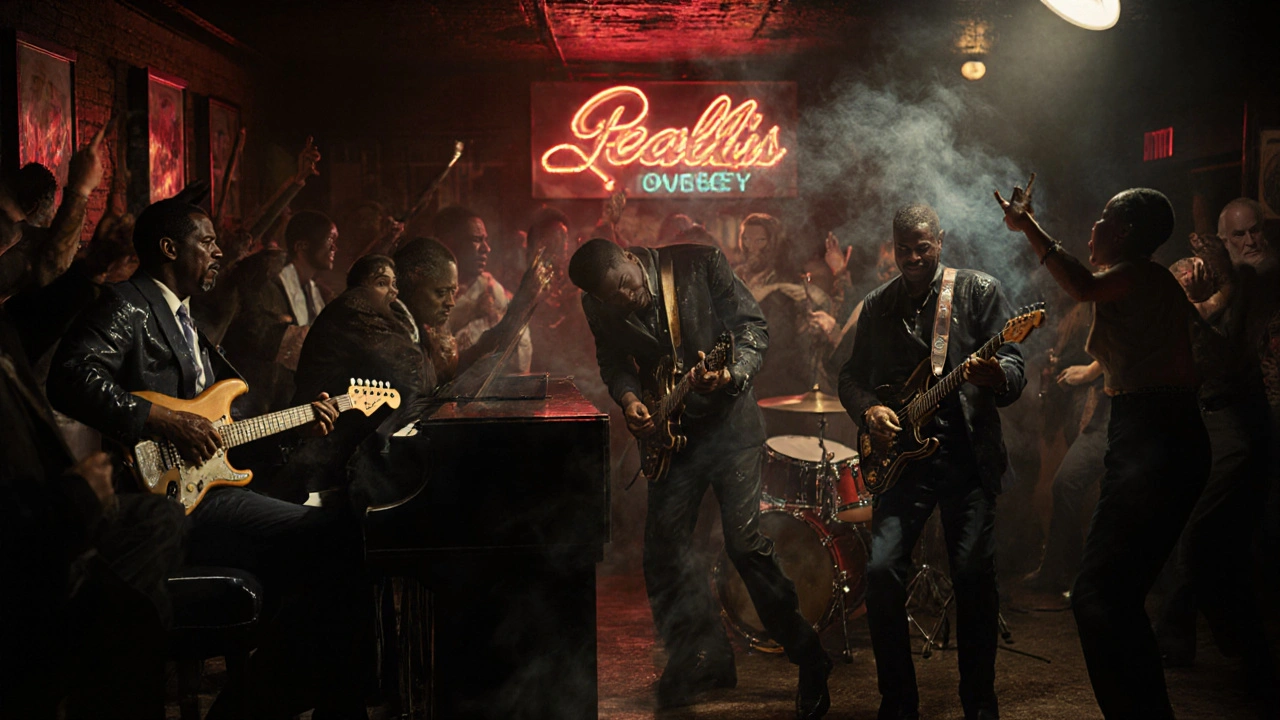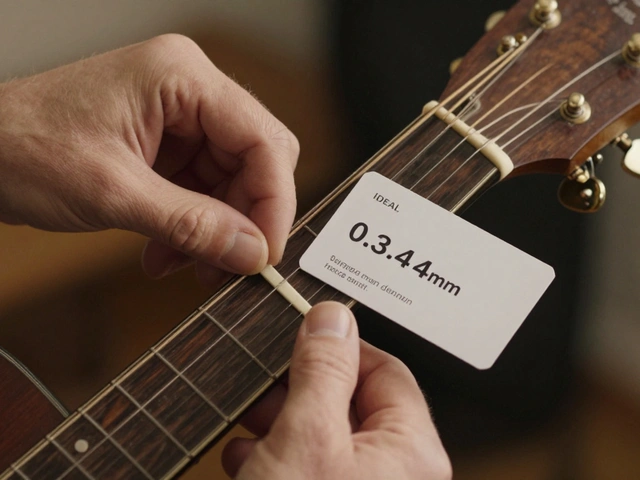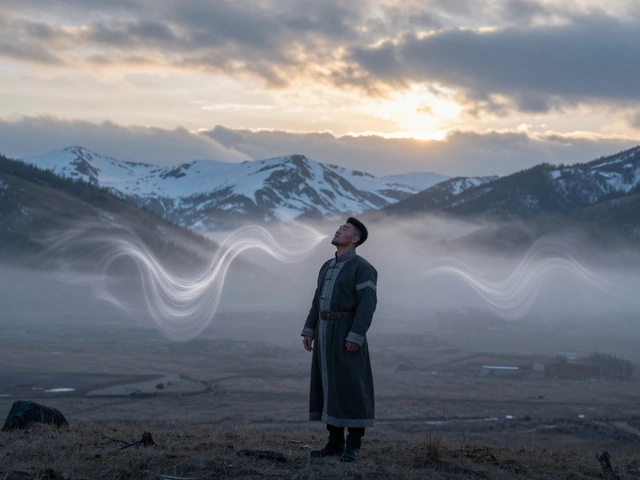Rock Music Evolution Timeline
Explore how rock music transformed from its blues roots to modern subgenres with this interactive timeline.
Blues Roots & R&B Foundations
Little Richard, Fats Domino, Sister Rosetta Tharpe blended gospel, blues, and R&B. Raw, electric sound with driving rhythms and emotional vocals.
Birth of Rock and Roll
Chuck Berry, Elvis Presley, Jerry Lee Lewis popularized the genre. White artists often received more commercial success while Black pioneers were overlooked.
British Invasion & Psychedelic Era
The Beatles, The Rolling Stones, Jimi Hendrix redefined rock. Counterculture movement with Woodstock in 1969.
Hard Rock & Heavy Metal
Led Zeppelin, Black Sabbath, Deep Purple created heavier sounds. Punk emerged as an anti-establishment movement with The Ramones.
Glam Metal & Alternative
Mötley Crüe, Bon Jovi dominated with spandex and theatrics. U2, The Cure offered deeper, more atmospheric rock.
Grunge & Alternative Explosion
Nirvana, Pearl Jam brought raw, emotional rock. Seattle sound rejected 80s excess with flannel and honesty.
Fragmentation & Indie Revival
Foo Fighters, The White Stripes kept rock alive in different forms. Digital streaming changed music discovery.
Modern Rock Evolution
Greta Van Fleet, Black Pumas blend classic and contemporary sounds. Rock elements appear in pop, with artists like Olivia Rodrigo.
Rock music didn’t just appear one day. It didn’t start with a guitar solo or a drum fill. It was born from sweat, rebellion, and a whole lot of blues. By the time the 1950s rolled around, young people in America were hungry for something louder, faster, and more real than the polished pop of the time. Rock music gave them that. And over the next 70 years, it didn’t just grow-it split, crashed, rebuilt, and exploded into dozens of new forms.
Where Rock Music Really Began
Most people point to Elvis Presley or Chuck Berry as the first rock stars. But the roots go deeper. In the 1940s and early 50s, Black musicians in the American South were blending gospel, blues, and rhythm and blues into something raw and electric. Artists like Little Richard, Fats Domino, and Sister Rosetta Tharpe were playing with driving rhythms, distorted guitars, and vocals that screamed emotion. These weren’t just songs-they were statements.
When white artists like Elvis and Jerry Lee Lewis started covering these songs, they got radio play, record deals, and fame. But the original creators rarely saw the same rewards. That’s a dark truth in rock’s history: it was built on Black innovation, then packaged for white audiences. Still, the sound stuck. The energy was too powerful to ignore.
The British Invasion and the Birth of Rock as a Movement
By the early 1960s, rock had crossed the Atlantic. Bands like The Beatles, The Rolling Stones, and The Who didn’t just copy American blues-they twisted it. They added harmonies, experimental song structures, and a sense of rebellion that matched the changing times. The Beatles’ early hits were catchy, but by 1966’s Revolver, they were using tape loops, sitars, and studio effects that sounded like nothing before.
The Rolling Stones, on the other hand, leaned into the grit. Their music was dirty, dangerous, and unapologetic. Where The Beatles were playful, The Stones were real. And that contrast defined rock’s duality: the pop side and the underground side. Both mattered. Both shaped the genre.
By the late 60s, rock wasn’t just music anymore. It was tied to protests, psychedelia, and the counterculture. Woodstock in 1969 wasn’t just a festival-it was a moment. Half a million people gathered to hear Jimi Hendrix play the national anthem on electric guitar, and for a few days, it felt like the whole world was changing.
Hard Rock, Heavy Metal, and the Rise of the Guitar Hero
As the 70s began, rock split into two major paths. One led to softer, more polished sounds-think Fleetwood Mac or The Eagles. The other got heavier. Bands like Led Zeppelin, Black Sabbath, and Deep Purple turned up the amps, dropped the blues structure, and added thunderous drums and distorted riffs. Black Sabbath’s 1970 debut album didn’t just introduce heavy metal-it gave it a name, a sound, and a mood. Dark. Heavy. Oppressive. Perfect for a world still reeling from war and political chaos.
Guitars became weapons. Eddie Van Halen’s tapping technique in 1978 made people rethink what the instrument could do. Randy Rhoads brought classical influences into metal. Jimmy Page’s solos weren’t just fast-they told stories. Rock wasn’t just about songs anymore. It was about virtuosity. About showing off. About becoming a legend.

Punk Rock: The Anti-Rock Revolution
By the mid-70s, rock had become bloated. Concerts cost $25. Albums took a year to make. Bands were rich. Fans were tired. Then came punk.
In New York, bands like The Ramones played three-chord songs that lasted 90 seconds. In London, The Sex Pistols screamed about anarchy and boredom. No solos. No fancy gear. Just raw energy and a middle finger to the system. Punk didn’t care if you could play. It cared if you had something to say.
Punk didn’t last long as a mainstream force, but its impact was huge. It proved you didn’t need years of training to make music. It gave birth to DIY culture. It inspired countless bands to start in basements, record on four-track tapes, and release albums on their own labels. Without punk, there’d be no indie rock, no emo, no pop-punk.
The 80s: Glam, Hair Metal, and the Rise of MTV
The 1980s turned rock into a spectacle. Bands like Mötley Crüe, Poison, and Bon Jovi wore spandex, teased their hair, and sang about love, parties, and rebellion in ways that felt more like theater than truth. MTV changed everything. Suddenly, how you looked mattered as much as how you sounded.
But not all 80s rock was flashy. Bands like U2 and The Cure brought depth. U2’s The Joshua Tree in 1987 was a sonic landscape-big, emotional, and spiritual. The Cure’s dark, moody songs became anthems for outsiders. And then there was Bruce Springsteen, still singing about working-class kids, still packing stadiums, still sounding like the voice of a generation.
Rock in the 80s was split: one half glitter and noise, the other half soul and truth. Both were valid. Both sold millions.

Alternative Rock and the Grunge Explosion
By the early 90s, hair metal was dead. People were tired of the lies. Then Nirvana dropped Nevermind in 1991. The opening riff of "Smells Like Teen Spirit" wasn’t flashy. It was messy, angry, and real. Kurt Cobain didn’t sing like a rock star-he sang like someone who was tired of pretending.
Grunge wasn’t a style. It was a reaction. Seattle bands like Pearl Jam, Soundgarden, and Alice in Chains brought back the grit of punk and the weight of metal. They wore flannel shirts, didn’t smile for photos, and refused to play the game. Their music didn’t sell because it was polished. It sold because it felt honest.
By 1994, rock was no longer the domain of stadium acts. It belonged to the basement, the college radio station, the kid who bought a used guitar and learned to play by ear. Alternative rock became the new mainstream. And for a few years, it felt like music was going back to its roots.
Rock in the 2000s and Beyond: Fragmentation and Survival
The 2000s didn’t kill rock-they scattered it. The rise of digital music, streaming, and social media changed how people discovered songs. Rock didn’t disappear. It just stopped being the center of the universe.
Some bands tried to stay big: Foo Fighters kept rocking stadiums. Muse added symphonies and sci-fi themes. Arctic Monkeys brought sharp lyrics and British wit. Others went underground: The White Stripes stripped rock down to guitar and drums. Jack White played with analog gear, refused to use computers, and reminded people that rock could still feel handmade.
By the 2020s, rock doesn’t dominate the charts. But it’s still alive-in indie clubs, in college towns, in the playlists of teenagers who found it on TikTok. Bands like Greta Van Fleet channel Led Zeppelin. Black Pumas blend soul and garage rock. The 1975 mix pop and rock in ways no one expected. Rock isn’t dead. It’s just learning to live differently.
What Rock Music Means Today
Rock music today isn’t about numbers. It’s not about chart positions. It’s about identity. For some, it’s the sound of rebellion. For others, it’s the soundtrack to late-night drives or quiet moments alone with a guitar. It’s the music that taught people to play their own way-even if no one else liked it.
Rock has always been about change. It started with the blues, survived the backlash, adapted to technology, and outlasted trends. It doesn’t need to be on the radio to matter. It just needs to be played. And as long as someone picks up a guitar, slams a drum, or screams into a mic because they have something to say-rock music will keep evolving.
What are the key genres that came from rock music?
Rock gave birth to dozens of subgenres. Heavy metal emerged in the late 60s with bands like Black Sabbath. Punk rock exploded in the mid-70s with The Ramones and The Sex Pistols. Grunge developed in the early 90s through Nirvana and Pearl Jam. Other offshoots include alternative rock, indie rock, post-punk, hard rock, stoner rock, and pop-punk. Each genre took rock’s core elements-guitars, drums, vocals-and twisted them into something new.
Who are the most influential rock artists of all time?
The most influential figures include Chuck Berry, who defined the rock and roll guitar riff; Little Richard, who brought wild energy and piano-driven rhythms; Jimi Hendrix, who revolutionized electric guitar playing; The Beatles, who expanded rock’s songwriting possibilities; Led Zeppelin, who fused blues with heavy riffs; The Rolling Stones, who kept rock raw and rebellious; Nirvana, who brought grunge into the mainstream; and Kurt Cobain, whose emotional honesty reshaped rock lyrics. Each of them changed how rock was made, heard, or felt.
Why did rock music lose mainstream popularity after the 2000s?
Rock didn’t disappear-it got replaced. Streaming platforms and social media shifted how people find music. Hip-hop, pop, and electronic genres became dominant because they were easier to produce, more suited to short-form content, and better aligned with digital trends. Rock albums required time to grow on listeners, and that didn’t fit the new algorithm-driven model. Also, the music industry stopped investing in rock bands the way it once did. But rock still thrives in live venues, underground scenes, and among younger fans rediscovering it through playlists and documentaries.
Is rock music still being made today?
Yes, and it’s evolving. Bands like Greta Van Fleet channel classic rock sounds with modern production. Black Pumas mix soul, funk, and garage rock. The 1975 blend rock with electronic beats and pop hooks. Even artists like Olivia Rodrigo incorporate rock elements into pop songs. Rock isn’t dead-it’s just not always labeled as such anymore. Many new artists don’t care about genres. They just use what works: distortion, driving drums, and honest lyrics.
How did technology change rock music?
Technology reshaped rock at every stage. In the 1960s, multitrack recording let bands like The Beatles layer vocals and instruments in ways never heard before. The 1970s brought effects pedals-delay, reverb, fuzz-that gave guitarists new sounds. The 1980s introduced drum machines and synths, which some bands embraced, others rejected. In the 2000s, digital audio workstations let bedroom musicians record albums without studios. Today, AI tools can mimic guitar tones or generate drum patterns, but the best rock still comes from human feeling, not algorithms.





